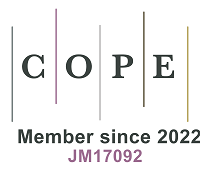REFERENCES
1. Ju-Nam Y, Lead JR. Manufactured nanoparticles: an overview of their chemistry, interactions and potential environmental implications. Sci Total Environ 2008;400:396-414.
2. Derfus AM, Chan WCW, Bhatia SN. Probing the cytotoxicity of semiconductor quantum dots. Nano Lett 2004;4:11-8.
3. Lok CN, Ho CM, Chen R, et al. Silver nanoparticles: partial oxidation and antibacterial activities. J Biol Inorg Chem 2007;12:527-34.
4. Shi Z, Nurmi JT, Tratnyek PG. Effects of nano zero-valent iron on oxidation-reduction potential. Environ Sci Technol 2011;45:1586-92.
5. Zhang L, Jiang Y, Ding Y, Povey M, York D. Investigation into the antibacterial behaviour of suspensions of ZnO nanoparticles (ZnO nanofluids). J Nanopart Res 2007;9:479-89.
6. Heinlaan M, Ivask A, Blinova I, Dubourguier HC, Kahru A. Toxicity of nanosized and bulk ZnO, CuO and TiO2 to bacteria Vibrio fischeri and crustaceans Daphnia magna and Thamnocephalus platyurus. Chemosphere 2008;71:1308-16.
7. Domingos RF, Rafiei Z, Monteiro CE, Khan MA, Wilkinson KJ. Agglomeration and dissolution of zinc oxide nanoparticles: role of pH, ionic strength and fulvic acid. Environ Chem 2013;10:306.
8. Kaegi R, Voegelin A, Ort C, et al. Fate and transformation of silver nanoparticles in urban wastewater systems. Water Res 2013;47:3866-77.
9. Domingos RF, Tufenkji N, Wilkinson KI. Aggregation of titanium dioxide nanoparticles: role of a fulvic acid. Environ Sci Technol 2009;43:1282-6.
10. Hotze EM, Bottero JY, Wiesner MR. Theoretical framework for nanoparticle reactivity as a function of aggregation state. Langmuir 2010;26:11170-5.
11. Watanabe CH. Fate, behavior and ecotoxicology of silver nanoparticles: interactions with natural organic matter in aquatic systems. Available from: http://hdl.handle.net/11449/192324 [Last accessed on 1 Feb 2023].
12. Kinniburgh DG. FIT user guide. BGS Technical Report WD/93/23. 1993.
13. Hartmann N, Skjolding L, Hansen S, et al. Environmental fate and behaviour of nanomaterials: New knowledge on important transfomation processes. Available from: https://www.semanticscholar.org/paper/Environmental-fate-and-behaviour-of-nanomaterials%3A-Hartmann-Skjolding/e1b467500475ab1255f9ee821d372dba20e35594 [Last accessed on 1 Feb 2023].
14. Romeo D, Salieri B, Hischier R, Nowack B, Wick P. An integrated pathway based on in vitro data for the human hazard assessment of nanomaterials. Environ Int 2020;137:105505.
16. Abnt. Aquatic ecotoxicology - chronic toxicity - test with algae (Chlorophyceae). 12713: 27 p. 2018.
17. Oecd. Test No. 201: Freshwater alga and cyanobacteria, growth inhibition test. OECD Publishing, Paris. 2011.
18. Usepa. Short-term methods for estimating the chronic toxicity of effluents and receiving waters to freshwater organisms. Available from: https://www.epa.gov/sites/default/files/2015-08/documents/short-term-chronic-freshwater-wet-manual_2002.pdf [Last accessed on 1 Feb 2023].
19. Abnt. Aquatic ecotoxicology - acute toxicity - test with daphnia spp (cladocera, crustacea). Available from: https://www.fcav.unesp.br/Home/departamentos/fitossanidade/joaquimgoncalvesmachadoneto/nbr12713-2016-toxic-aguda-daphnia.pdf[Last accessed on 1 Feb 2023].
20. Abbt-Braun G, Lankes U, Frimmel FH. Structural characterization of aquatic humic substances - the need for a multiple method approach. Aquat Sci 2004;66:151-170.
21. Usepa. Method 3050B: acid digestion of sediments, sludges, and soils. Available from: https://www.epa.gov/sites/default/files/2015-06/documents/epa-3050b.pdf [Last accessed on 1 Feb 2023].
23. Rocha JC, Rosa AH. Substâncias húmicas aquáticas: interação com espécies metálicas. Available from: https://www.amazon.com.br/Subst%C3%A2ncias-h%C3%BAmicas-aqu%C3%A1ticas-Andre-Henrique/dp/8571394741 [Last accessed on 1 Feb 2023].
24. Ministério do Meio Ambiente. Gabinete da ministra 2011. Available from: http://www.ibama.gov.br/sophia/cnia/legislacao/CONAMA/RE0430-130511.PDF [Last accessed on 1 Feb 2023].
25. Leclerc S, Wilkinson KJ. Bioaccumulation of nanosilver by chlamydomonas reinhardtii-nanoparticle or the free ion? Environ Sci Technol 2014;48:358-64.
26. Tharaud M, Gardoll S, Khelifi O, Benedetti M, Sivry Y. uFREASI: user-FRiendly Elemental dAta procesSIng. A free and easy-to-use tool for elemental data treatment. Microchem J 2015;121:32-40.
27. Tonietto AE, Lombardi AT, Vieira AA, Parrish CC, Choueri RB. Cylindrospermopsis raciborskii (Cyanobacteria) exudates: chemical characterization and complexation capacity for Cu, Zn, Cd and Pb. Water Res 2014;49:381-90.
28. Benedetti MF, Van Riemsdijk WH, Koopal LK, Kinniburgh DG, Gooddy DC, Milne CJ. Metal ion binding by natural organic matter: from the model to the field. Geochimica et Cosmochimica Acta 1996;60:2503-13.
29. Vermeer AWP. Interactions between humic acid and hematite and their effects on metal ion speciation. Available from: https://edepot.wur.nl/209961 [Last accessed on 1 Feb 2023].
30. Milne CJ, Kinniburgh DG, Tipping E. Generic NICA-Donnan model parameters for proton binding by humic substances. Environ Sci Technol 2001;35:2049-59.
31. Manahan SE. Environmental chemistry. 8th ed.CRC Press. Available from: https://www.amazon.com/Environmental-Chemistry-Eighth-Stanley-Manahan/dp/1566706335 [Last accessed on 1 Feb 2023].
32. Sun XF, Wang SG, Zhang XM, et al. Spectroscopic study of Zn2+ and Co2+ binding to extracellular polymeric substances (EPS) from aerobic granules. J Colloid Interface Sci 2009;335:11-7.
33. Zeng J, Gao JM, Chen YP, et al. Composition and aggregation of extracellular polymeric substances (EPS) in hyperhaline and municipal wastewater treatment plants. Sci Rep 2016;6:26721.
34. Terkhi M, Taleb F, Gossart P, Semmoud A, Addou A. Fourier transform infrared study of mercury interaction with carboxyl groups in humic acids. J Photochem Photobiol, A 2008;198:205-14.
35. Zhou K, Hu Y, Zhang L, Yang K, Lin D. The role of exopolymeric substances in the bioaccumulation and toxicity of Ag nanoparticles to algae. Sci Rep 2016;6:32998.
36. Zheng S, Zhou Q, Chen C, et al. Role of extracellular polymeric substances on the behavior and toxicity of silver nanoparticles and ions to green algae Chlorella vulgaris. Sci Total Environ 2019;660:1182-90.
37. Tejamaya M, Römer I, Merrifield RC, Lead JR. Stability of citrate, PVP, and PEG coated silver nanoparticles in ecotoxicology media. Environ Sci Technol 2012;46:7011-7.
38. Wiesner MR, Bottero JY. Environmental nanotechnology: applications and impacts of nanomaterials. Available from: https://www.accessengineeringlibrary.com/content/book/9780071477505/chapter/chapter7 [Last accessed on 1 Feb 2023].
39. Grillo R, Rosa AH, Fraceto LF. Engineered nanoparticles and organic matter: a review of the state-of-the-art. Chemosphere 2015;119:608-19.
40. Badawy AM, Luxton TP, Silva RG, Scheckel KG, Suidan MT, Tolaymat TM. Impact of environmental conditions (pH, ionic strength, and electrolyte type) on the surface charge and aggregation of silver nanoparticles suspensions. Environ Sci Technol 2010;44:1260-6.
41. Liu H, Fang HH. Characterization of electrostatic binding sites of extracellular polymers by linear programming analysis of titration data. Biotechnol Bioeng 2002;80:806-11.
42. Sun B, Zhang Y, Li R, et al. New insights into the colloidal stability of graphene oxide in aquatic environment: Interplays of photoaging and proteins. Water Res 2021;200:117213.
43. Zhang W, Ke S, Sun C, Xu X, Chen J, Yao L. Fate and toxicity of silver nanoparticles in freshwater from laboratory to realistic environments: a review. Environ Sci Pollut Res Int 2019;26:7390-404.
44. Sikora FJ, Stevenson FJ. Silver complexation by humic substances: conditional stability constants and nature of reactive sites. Geoderma 1988;42:353-63.
45. Levard C, Hotze EM, Lowry GV, Brown GE Jr. Environmental transformations of silver nanoparticles: impact on stability and toxicity. Environ Sci Technol 2012;46:6900-14.
46. Baalousha M, Manciulea A, Cumberland S, Kendall K, Lead JR. Aggregation and surface properties of iron oxide nanoparticles: influence of ph and natural organic matter. Environ Toxicol Chem 2008;27:1875.
47. Baalousha M, Nur Y, Römer I, Tejamaya M, Lead JR. Effect of monovalent and divalent cations, anions and fulvic acid on aggregation of citrate-coated silver nanoparticles. Sci Total Environ 2013;454-455:119-31.
48. Dong H, Lo IM. Influence of calcium ions on the colloidal stability of surface-modified nano zero-valent iron in the absence or presence of humic acid. Water Res 2013;47:2489-96.
49. Diegoli S, Manciulea AL, Begum S, Jones IP, Lead JR, Preece JA. Interaction between manufactured gold nanoparticles and naturally occurring organic macromolecules. Sci Total Environ 2008;402:51-61.
50. Chaloupka K, Malam Y, Seifalian AM. Nanosilver as a new generation of nanoproduct in biomedical applications. Trends Biotechnol 2010;28:580-8.
51. Newton KM, Puppala HL, Kitchens CL, Colvin VL, Klaine SJ. Silver nanoparticle toxicity to Daphnia magna is a function of dissolved silver concentration. Environ Toxicol Chem 2013;32:2356-64.
52. Furtado LM, Norman BC, Xenopoulos MA, Frost PC, Metcalfe CD, Hintelmann H. Environmental fate of silver nanoparticles in boreal lake ecosystems. Environ Sci Technol 2015;49:8441-50.







